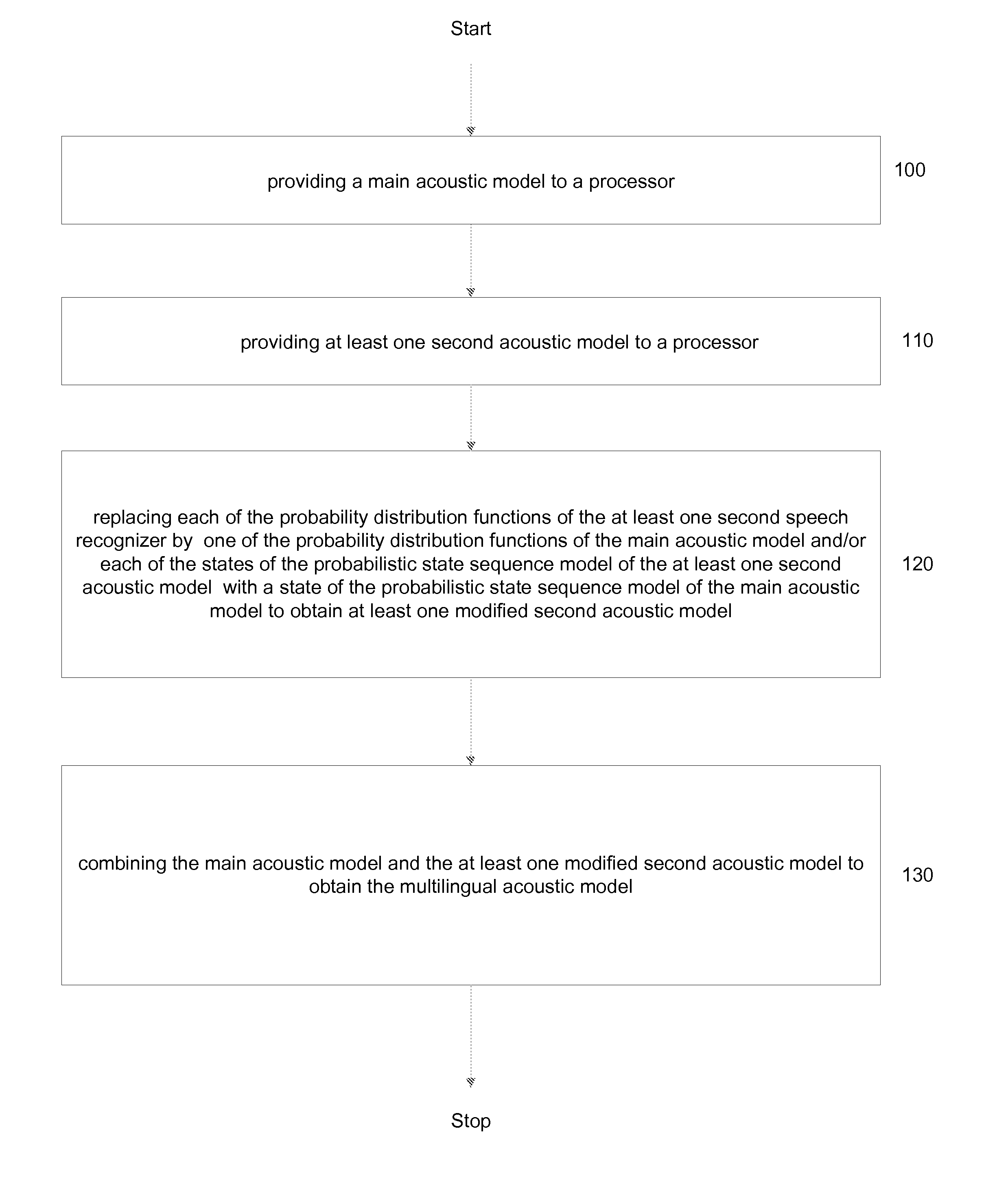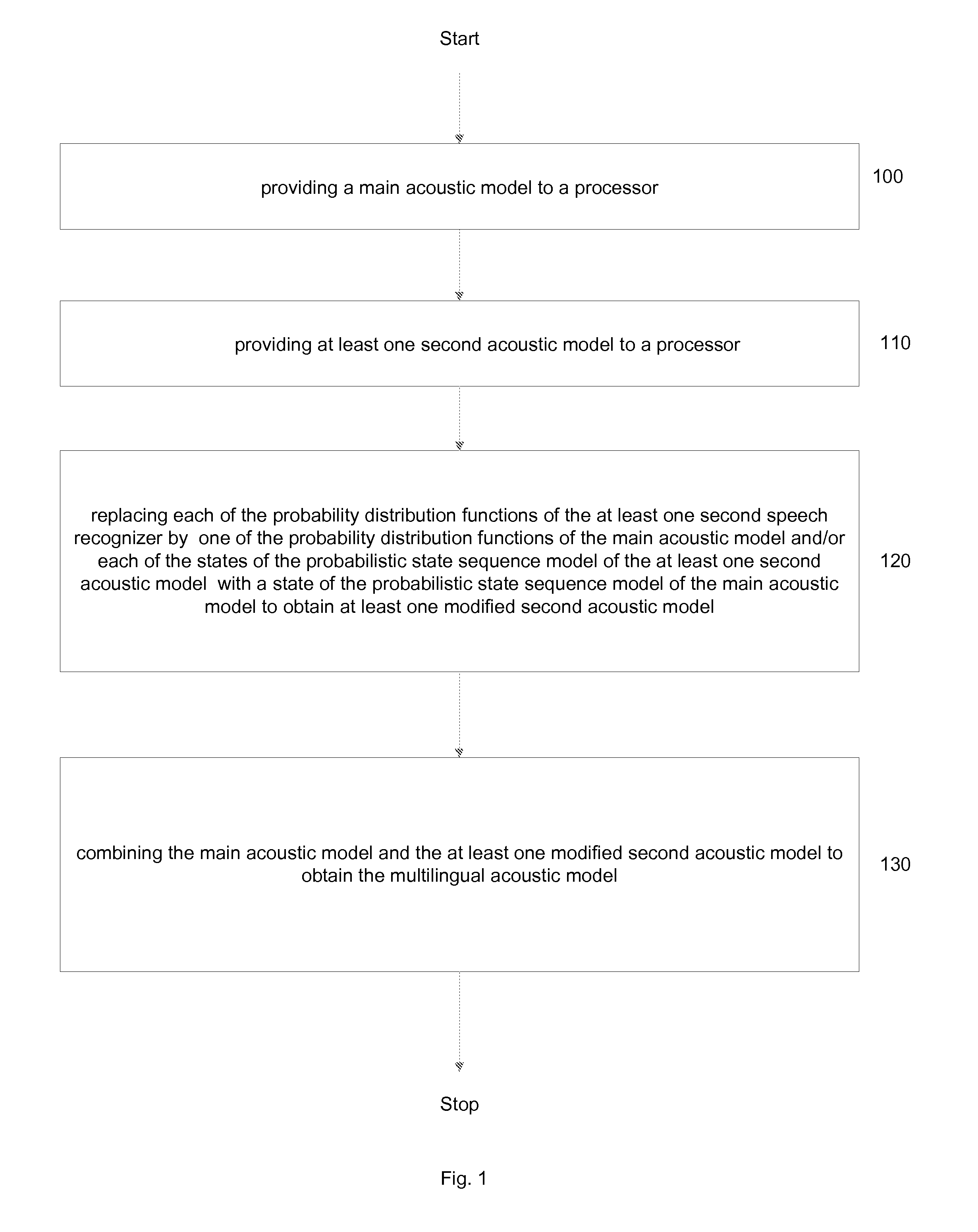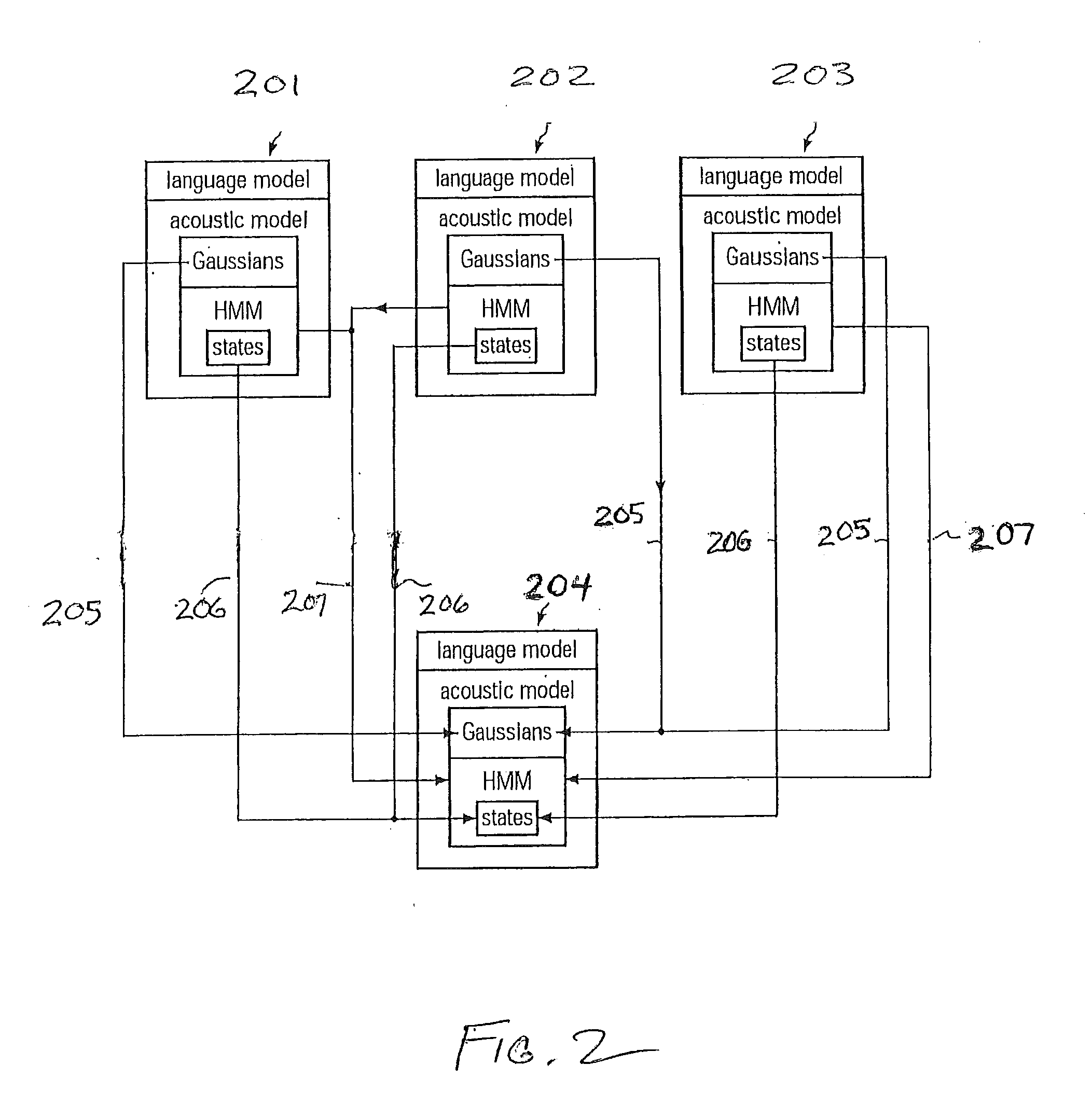Speech Recognition Based on a Multilingual Acoustic Model
a multilingual acoustic model and speech recognition technology, applied in speech analysis, speech recognition, instruments, etc., can solve the problems of inconvenient or even inacceptable processing time, eminent problems, demanding problems, etc., to improve the reliability of speech input recognition results, and facilitate fine-tuning the achieved multilingual acoustic model
- Summary
- Abstract
- Description
- Claims
- Application Information
AI Technical Summary
Benefits of technology
Problems solved by technology
Method used
Image
Examples
Embodiment Construction
[0033]In the following disclosure, the examples use Gaussian distributions as examples of probability distribution functions and Hidden Markov Models as examples of probabilistic state models. However other probability distribution functions and probabilistic state models may be employed without deviating from the scope of the invention. Similarly, the disclosure references distance measurements as examples of a comparison criteria set. Other criteria sets may be employed for comparing two or more values without deviating from the scope of the invention.
[0034]FIG. 1 is a flow chart that demonstrates a method for generating a multilingual acoustic model that includes a multilingual acoustic model. The multilingual acoustic model is formed from two or more speech recognizers that each include a plurality of Gaussian distributions and associated Hidden Markov Models. The main acoustic model is retrieved from a memory location and provided to a processor. The main acoustic model is gene...
PUM
 Login to View More
Login to View More Abstract
Description
Claims
Application Information
 Login to View More
Login to View More - R&D
- Intellectual Property
- Life Sciences
- Materials
- Tech Scout
- Unparalleled Data Quality
- Higher Quality Content
- 60% Fewer Hallucinations
Browse by: Latest US Patents, China's latest patents, Technical Efficacy Thesaurus, Application Domain, Technology Topic, Popular Technical Reports.
© 2025 PatSnap. All rights reserved.Legal|Privacy policy|Modern Slavery Act Transparency Statement|Sitemap|About US| Contact US: help@patsnap.com



